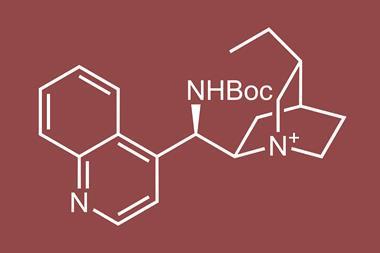Optimising for efficiency deserves credit too
Society doesn’t give enough credit for incremental improvement. It’s not common knowledge who got to the top of Everest the fastest, or who got into space the cheapest – people remember who was first. The field of total synthesis is similar, and I’ve written before about how the most memorable syntheses of a particular target are the first – or sometimes the last (ie the best).
The problem is that even these ‘best’ syntheses are rarely optimised for efficiency or practicality. In this context, we tend to award this moniker to the cleverest, quirkiest or most elegant way of making a molecule – often the kind of routes you’d love to read about but hate to go and execute. Most often, the chemists behind these approaches will have only tried to optimise one or two key steps, letting everything else largely fall where it may. There’s no extra credit for getting 95% instead of 70% on that Swern oxidation that most readers will skim over, so why try?
The ideal synthesis requires both innovation and obsessive fine-tuning
Occasionally, a group will take an interest in a single important target, dig in and start to work out all the kinks in a route in search of something really practical. If you care about making a quantity of your target, you can’t be throwing away a quarter of your material on an easy step! This mode of research isn’t antithetical to a dramatic, breakthrough-driven ‘Eureka!’ kind of science; as any process chemist can tell you, the ideal synthesis requires both innovation and obsessive fine-tuning. Unfortunately, while academia is a font of the former, it often doesn’t incentivise the latter. It can be hard to convince a graduate student to work on the fifth generation synthesis of whocaresamycin, and for all but the most important targets, this kind of effort doesn’t make sense.
A recent synthesis of vancomycin aglycon by Dale Boger and co-workers at The Scripps Research Institute in California, US, is a rare example of a synthesis that’s both iterative and innovative. With it, the group moves closer to its longstanding goal of addressing vancomycin antibiotic resistance through analogue synthesis.1 This is the group’s second bite at the apple, and it makes significant improvements over their original route, particularly with respect to axial stereocontrol. A key challenge of vancomycin is that it contains aspects of both point and axial chirality, and so far no one has achieved a high level of control over both these elements.
First, the team establishes the AB axis of chirality through a highly efficient and stereoselective Suzuki coupling reaction (figure 1). The desired atropisomer is formed as almost the sole product – a huge advance over the 1:1 mixture obtained in their first generation route. Although the conditions look a little vanilla, there’s a lot more to this than meets the eye. Interestingly, the active species here is actually the palladium-ligated bisphosphine monooxide of Binap, [Binap(O)−Pd(0)]. If another common combination such as Binap and tris(dibenzylideneacetone)dipalladium(0) (Pd2dba3) is used, the reaction doesn’t work at all, as this palladium source can’t oxidise the Binap to the active monooxide form. It’s refreshing and instructive to see such a detailed discussion of a seemingly ordinary-looking reaction in a total synthesis and I’m really glad the group elected to publish this as a detailed full paper.
Later on, by tuning the silicon protecting group on the benzylic alcohol to preorganise the molecule, the team also achieves decent atropselectivity in the CD ring closure (figure 2), which was essentially uncontrolled in their original route.
There are so many neat tricks in this paper, from optimisation of the macrolactamisation to avoid epimerisation to using CD3CN for the Sandmeyer chlorination to slow down C–H abstraction from the solvent. It’s great to see an academic group make such an effort to evolve and optimise a synthesis!
References
1 D L Boger et al, J. Am. Chem. Soc., 2020, 142, 16039 (DOI: 10.1021/jacs.0c07433)














1 Reader's comment